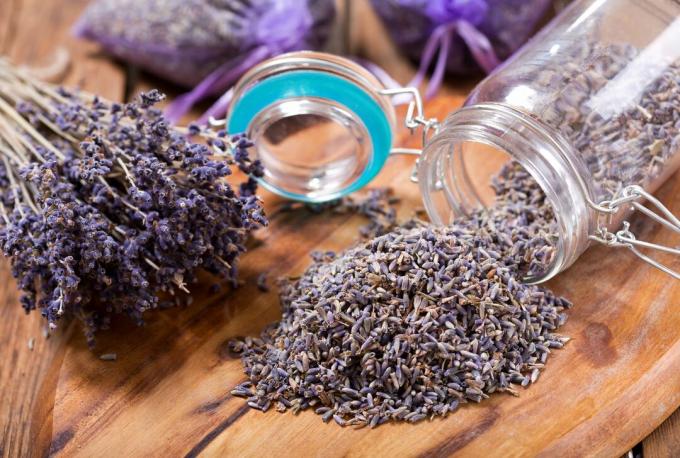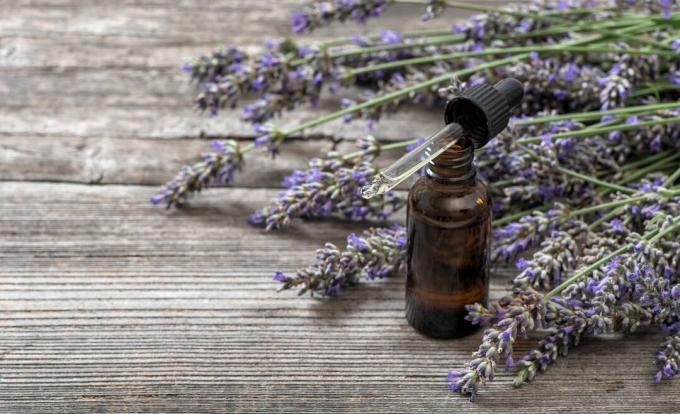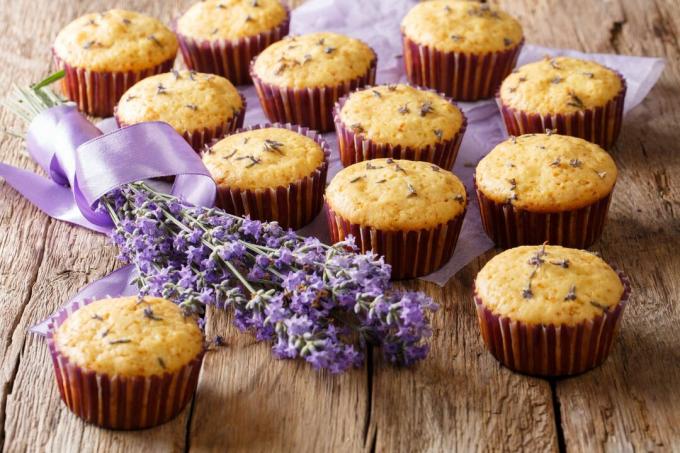The scent of lavender only really unfolds when it dries. How to dry lavender and where the flowers are used, we show here.

The fragrant one lavender (Lavandula) was already known to the ancient Egyptians, who used it to embalm their dead. Later, lavender encouraged the Romans before battles were approaching and served them as a medicinal plant for soldiers. Today the dried flowers of the Real lavender (Lavandula angustifolia), which are used in cosmetics, in the household and even in the kitchen. But what makes the purple, Mediterranean herb so special and what is the best way to dry it? We have summarized the answers to these questions for you in this article.
contents
- Dry lavender
-
Ingredients and uses of lavender
- Use of lavender as a medicinal plant
- Use of Lavender in the Household
- Using Lavender in Cooking
Dry lavender
The main harvest time for lavender is when it blooms between June and August. So that the flowers dry faster and do not run the risk of going moldy, you should only harvest the lavender on dry days. It is best to cut back the entire lavender bush when it is in full bloom (mid-July). Only the blossoming branch tips are used for drying. It is therefore best to shorten the stems about 10 centimeters below the base of the flower. After the harvest, the freshly cut flower panicles are first spread out on a cloth and dried. After a few days, they can also be hung up in bundles. So that the aroma is not lost after a short time, you should have the dried lavender flowers on one store in a dark, cool and dry place - for example in an airtight mason jar in the Storage cellar.
Summary drying lavender:
- Harvest time from June to August
- Only harvest on dry days
- Cut the branches about 10 cm below the base of the flower
- Spread this out on a cloth
- After a few days, hang up in bunches
- Dark, dry storage in jars or cans

Ingredients and uses of lavender
In addition to tannins and other secondary plant substances, dried lavender flowers contain up to three percent essential oil, which gives them their spicy aroma. The composition of the essential oil is extremely complex. So far, researchers have found over 150 compounds in this. The main components linalool and linalyl acetate together make up up to 75 percent. But other components - such as cineole, borneol and camphor - also play an important role in the overall aroma.
Use of lavender as a medicinal plant
For use in cosmetics and naturopathy, the essential oil is obtained by steam distillation. It is one of the few essential oils that can be applied directly to the skin. For example, it can be used as a wound healing agent for burns and minor injuries. But it can also be used as a mosquito repellent on mild summer evenings.
In exciting times, the scent of lavender also ensures calm and balance. It effectively drives away sleep robbers and brightens the mood. Lavender is a classic nerve relaxant that has a relaxing effect without making us tired. The Mediterranean herb also provides relaxation for headaches. In addition to using the essential oil, you can also drink the dried flowers as tea or use them as a bath additive.

For household use, the flowers can also be used to make an oil extract. All parts of the plant should be well covered with native vegetable oil (e.g. olive oil) to avoid mold formation. After 10 to 14 days, the homemade lavender oil is ready and you can use it strained as a fragrant massage oil against tense muscles.
Use of Lavender in the Household
Due to its ingredients, lavender is a natural disinfectant and can noticeably purify the air in rooms. The Latin name of the plant already indicates its usefulness, because "lavare" means "to wash". Lavender extracts and the essential oil can be used very well for sustainable household cleaning. Just add a few drops to the floor mopping water or use it to clean refrigerators and shelves. As delicately scented ironing water, it can also be used to dampen laundry. If you still haven't had enough of the aromatic scent, you can also use small scented pillows with lavender flowers from your own garden and perfume your laundry - these even help against moths in the Wardrobe.
Using Lavender in Cooking
The intense lavender aroma tastes best in the kitchen in combination with other herbs and spices. The mixture “Herbs of Provence”, for example, is particularly popular, but also the combination with sage, rosemary, Lemon peel or orange peel with all kinds of Mediterranean dishes, spicy cheese or grilled meat. Lavender flowers also taste great in homemade herb butter, lavender vinegar or herbal salt. Even in desserts, the slightly tart lavender aroma goes amazingly well with peaches, apricots, citrus fruits or honey.

If you are interested in the diversity of lavender, you should definitely take a look at ours List of species and varieties throw here.


